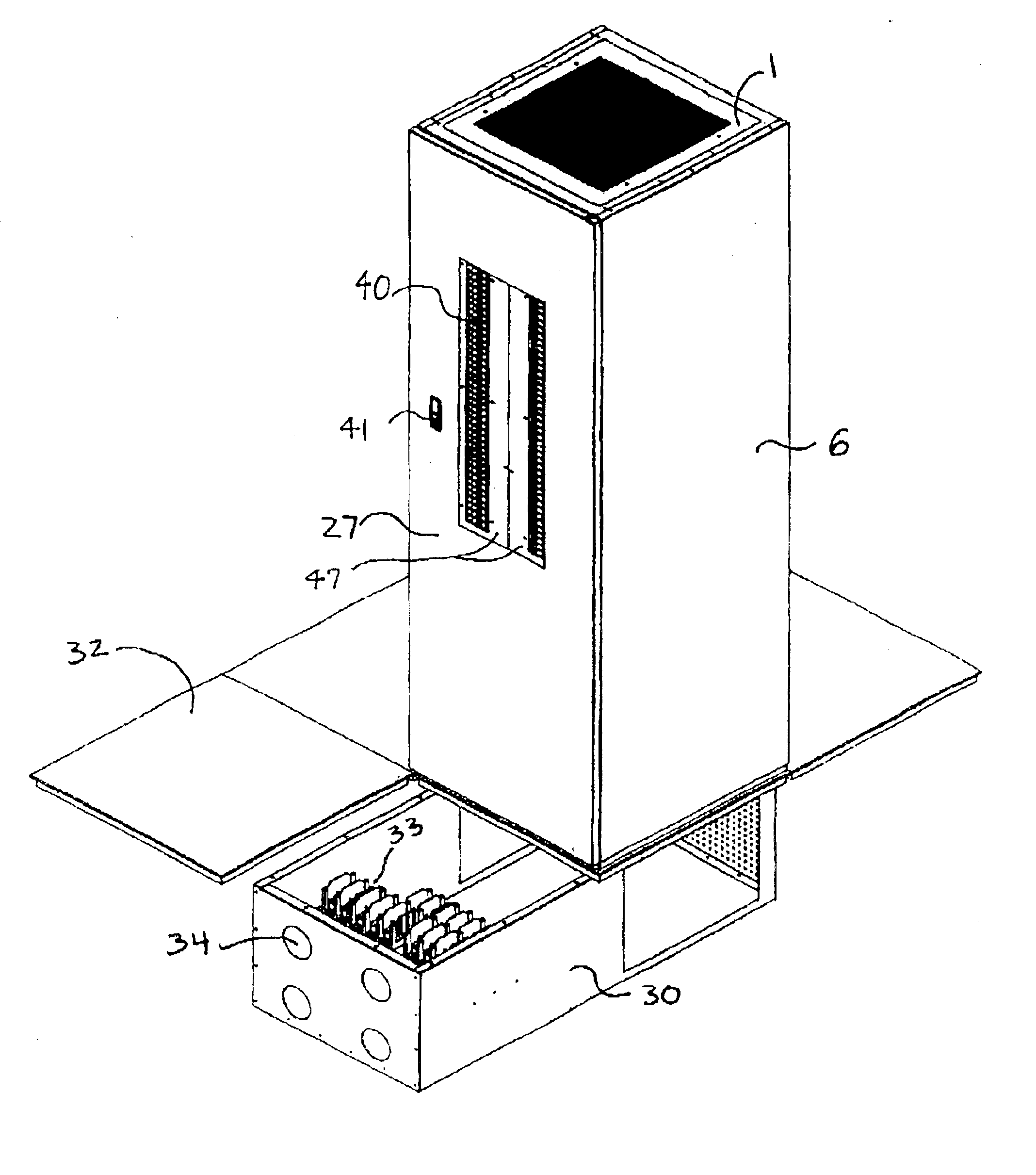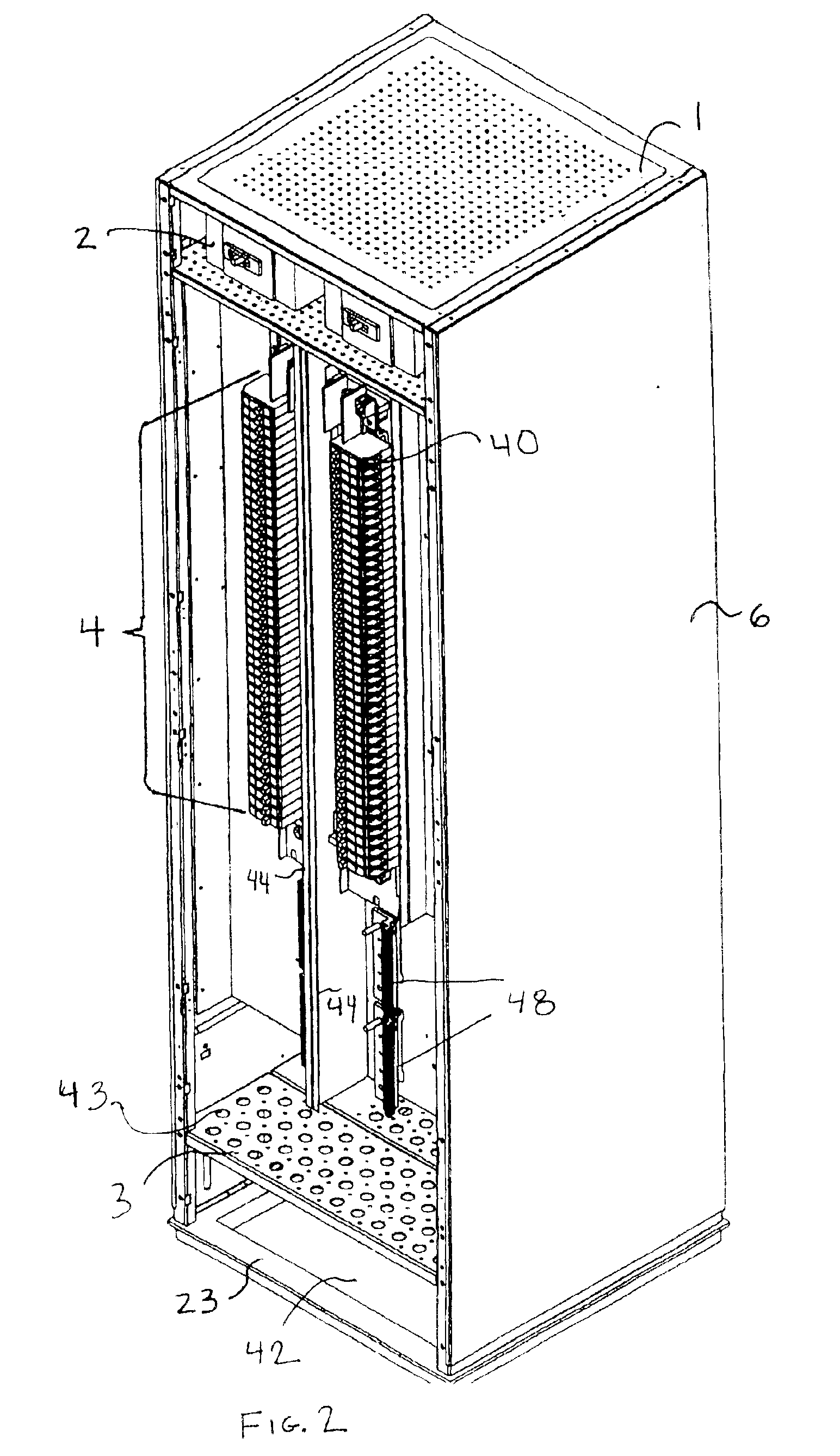Remote distribution cabinet
a remote distribution and cabinet technology, applied in the direction of cabinet/cabinet/drawer, electrical apparatus casing/cabinet/drawer, coupling device connection, etc., can solve the problems of large number of power distribution enclosures, large area, and large area of devices, so as to simplify and reduce the construction cost of the remote distribution cabinet. , the effect of small area
- Summary
- Abstract
- Description
- Claims
- Application Information
AI Technical Summary
Benefits of technology
Problems solved by technology
Method used
Image
Examples
Embodiment Construction
[0026]The outer portion of a remote distribution cabinet in accordance with the present invention is illustrated in FIG. 1. The remote distribution cabinet includes a door 27, door latch 41, side member cover 6, a screened protective top 1, and a doubled-tile size junction box 30 beneath the raised floor 32 and attached to the bottom member (see FIG. 2) of the remote distribution cabinet. Also illustrated in FIG. 1 are a number of branch circuit breakers 40. As shown, these circuit breakers 40 are operable without the need to open the enclosure door 27. However, it can be appreciated that a clear insert panel or cover (not shown) can be added for viewing of circuit breaker 40 positions without opening the cabinet. Such a cover may be made of Plexiglas® material or a similar transparent material.
[0027]FIG. 2 illustrates a remote distribution cabinet in accordance with the present invention with the door removed and the outer side cover 6 attached. The remote distribution cabinet incl...
PUM
 Login to View More
Login to View More Abstract
Description
Claims
Application Information
 Login to View More
Login to View More - R&D
- Intellectual Property
- Life Sciences
- Materials
- Tech Scout
- Unparalleled Data Quality
- Higher Quality Content
- 60% Fewer Hallucinations
Browse by: Latest US Patents, China's latest patents, Technical Efficacy Thesaurus, Application Domain, Technology Topic, Popular Technical Reports.
© 2025 PatSnap. All rights reserved.Legal|Privacy policy|Modern Slavery Act Transparency Statement|Sitemap|About US| Contact US: help@patsnap.com



